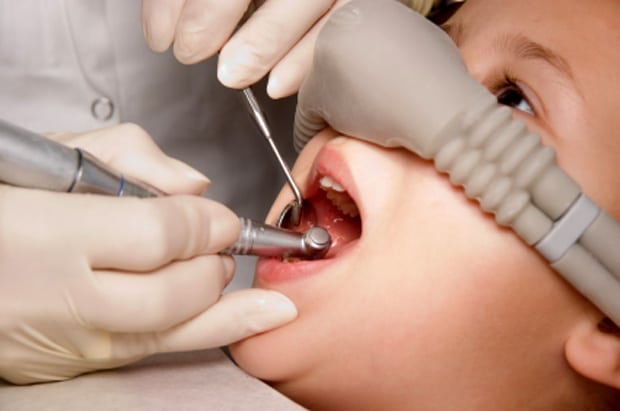Pediatric Dentistry
Have you heard about Tooth Fairy?
In our Pediatric Dentistry, almost on a daily basis, we see children who have a panic fear of dentists and are scared because of an unpleasant past experience. Such children should be given enough time to get to know the ambient and the staff of the new practice. Moreover, they should be approached even gentler and more patient. The lost trust should be rebuilt because it is essential for the future cooperation between the child and the dentist.
Keeping our numerous little patients in mind, dental practice ŠkodaDENT is one of the first in Croatia to introduce the nitrous oxide inhalation sedation for children. This safe and harmless method helps the little ones to overcome their fear and to erase their trauma, so their dental problems can be easily solved.
How does it work?
For all dental procedures the minimal dose of nitrous oxide is sufficient to:
- Remove fear and discomfort
- Cause comfort
- Relax the patient
- Make the patient feel “heavy”
- Minimize the gag reflex
- Reduce the feeling of passing of time
- Increase the suggestibility
- Diminish the trauma caused by the procedure
Bigger dose of nitrous oxide:
- Decreases the sensitivity to pain
- Causes cheerfulness and euphoria
Nitrous oxide cannot cause deep sedation.
How is it administered?
Nitrous oxide is administered mixed with oxygen, inhaled through a special nasal mask. The dose is adapted for each patient according to individual needs. The patient remains awake during the sedation and is able to communicate.
How safe is it?
The study of the Federal Association of Pediatric Dentists found only 8 cases of side effects (i.e. nausea) among 7145 sedations in a year. It was the only side effect which happened in merely 0,11% of the cases.
Who are the ideal candidates?
- Patients who suffer from dental phobia or dental anxiety
- Patients who have a poor gag reflex
- Patients who require extensive or involved dental procedures
- Cooperating children who require extensive procedures
- Uncooperative children
Who is not eligible?
- Patients with severe health problems
- Patients who cannot breathe through their nose
- Patients who are afraid of losing control
- Patients who have trouble with communication
- Patients who suffer from claustrophobia

